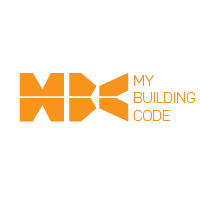World breastfeeding week is celebrated globally every year during the first seven days of the month of August. This year we focus on the Health Act 2017, that made it mandatory for Kenyan employers, with more than 30 employees, to put up all the necessary equipment to ensure that lactating mothers are well accommodated in the workplace.
Under this law, employers are expected to provide a clean room equipped with a refrigerator to store breast milk, a comfortable chair and an area for changing the baby. Mothers should be allowed an approximated 40 minute break every four hours to facilitate breastfeeding.
Further legislation include a government HR policy unveiled in 2016 that gave public institutions three years to set up day care facilities and provide breastfeeding employees with well-equipped lactating rooms.
The new requirements adds a new responsibility to real estate developers and those leasing space to push to make breast feeding mothers more comfortable. The critical importance of breastfeeding to children cannot be underscored since it provides the healthiest start to life and helps with bonding for mother and child.
A lactation station is more than just a secluded room. It must contain certain necessary equipment and facilities to make it functional.
First and foremost, the lactation station must NOT be located in the rest rooms. The act of breastfeeding is in essence providing food to an infant in the form of breast milk.The right to breastfeed must be provided in such a manner that the dignity for both mother and child are maintained. This means that the room must have sufficient space, be well lit and have adequate ventilation.
The breastfeeding experience requires a relaxed atmosphere. Availability of comfortable seats for mothers and small table to change the baby will go a long way in achieving this. Some mothers may prefer to be secluded from the prodding eyes of strangers hence the designated space should be away from the general public with door signage.
Mothers are required to wash their hands with soap before and after feeding their children, and after changing their diapers. To maintain adequate hygienic conditions, proper hand washing equipment such as a sink with running water and soap must be provided.
Equipment and supplies for use in the lactation space should be fit for the intended purpose and must meet the required standards where applicable. An electrical outlet for breast pumps is mandatory as well as the presence of, or nearby access to refrigerators and storage cabinets which may be lockable for enhanced safety of the employee’s equipment and expressed breast milk.
In the past, few companies provided female employees with breastfeeding stations which often lead them to quitting the workforce or stopping breastfeeding altogether. It is in everyone’s best interest to secure breastfeeding friendly places to ensure women can combine working with breastfeeding.
Does your workplace have a friendly breastfeeding environment? How many public buildings can you list, that boast of a designated nursing and breast feeding center for the lactating mums? Please let us know in the comments section.







